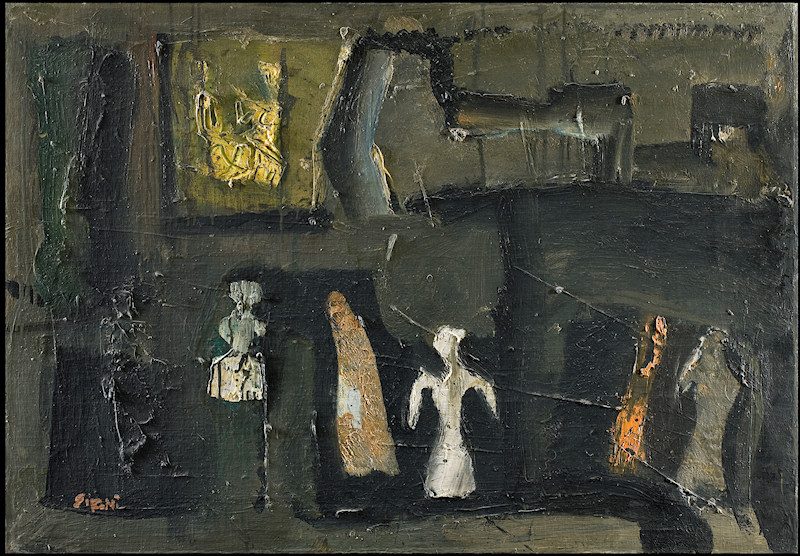One of the leaders of Novecento Italiano, Mario Sironi, was born in Sassari, Sardinia on May 12, 1885. Founded in 1922 by 7 artists–Bucci, Dudreville, Funi, Malerba, Masussig, Oppi, and Sironi–the movement grew to include more than 100 artists by the end of the decade. Guided by the ideas of Margherita Sarfetti the group intentionally moved away from the “violence” of the avante-garde and from contemporary metaphysical interests to focus instead on “naturalistic features.” (Bossaglia). Their subject matter showed a concern with subjects that promoted “moral health” including an interest in family, love of the domestic and rural life, as well as tradition. (Bossaglia) These ideas continued to grow in popularity with the rise of “moral hygiene” initiatives embraced by authoritarian regimes.
Sironi’s career started with a brief course of study at the University of Rome; by 1906 he was in Paris and rooming with Umberto Boccioni. In 1914 he was associated with Futurism and exhibited with the group until the rise of Novecento Italiano.
From 1921 to 1943, Sironi executed caricatures for the Fascist paper, Popolo d’Italia. In her discussion of his graphic work, Emily Braun notes that contemporary critics “considered Sironi’s political cartoons to be the only true expression of Fascist style.”
Sironi died on August 13, 1961 having lived out the post-war years in “self-imposed isolation” (Braun). In 2018, the Galleria Harry Bertoia in Pordenone mounted a retrospective of Sironi’s work that focused only on his work between 1913 to 1924 or from Futurism to Classicism.
References: Benzi, Fabio & Francesco Leone, eds. Mario Sironi dal Futurismo al Classicismo 1913-1924. Milan: Silvana Editoriale, 2018; Bossaglia, Rossana. Translated by Howard Rodger MacLean. “The Iconography of the Italian Novecento in the European Context.” Journal of Decorative and Propaganda Arts. Vol.3 (Winter 1987): 52-65; Braun, Emily. “Sironi, Mario.” Grove Art Online. Oxford Art Online. Oxford University Press. https://doi.org/10.1093/gao/9781884446054.article.T079003
Images:
Composizione or Composizione e figure (1957) (Fondazione Cariplo, Wikimedia Commons)
Photograph of Filippo Tommaso Marinetti, Antonio Sant’Elia, unknown figure, Mario Sironi and Umberto Boccioni (1916) (Wikimedia Commons)
Great Hall of the University of Rome with L’Italia tra le Arti e le Scienze (1935) (Wikimedia Commons)
Further Reading: Emily Braun, Mario Sironi and Italian Modernism: Art and Politics under Fascism. Cambridge UK: Cambridge University Press, 2000; Baldacci, Paolo. Mario Sironi. New York: Rizzoli, 1990.



